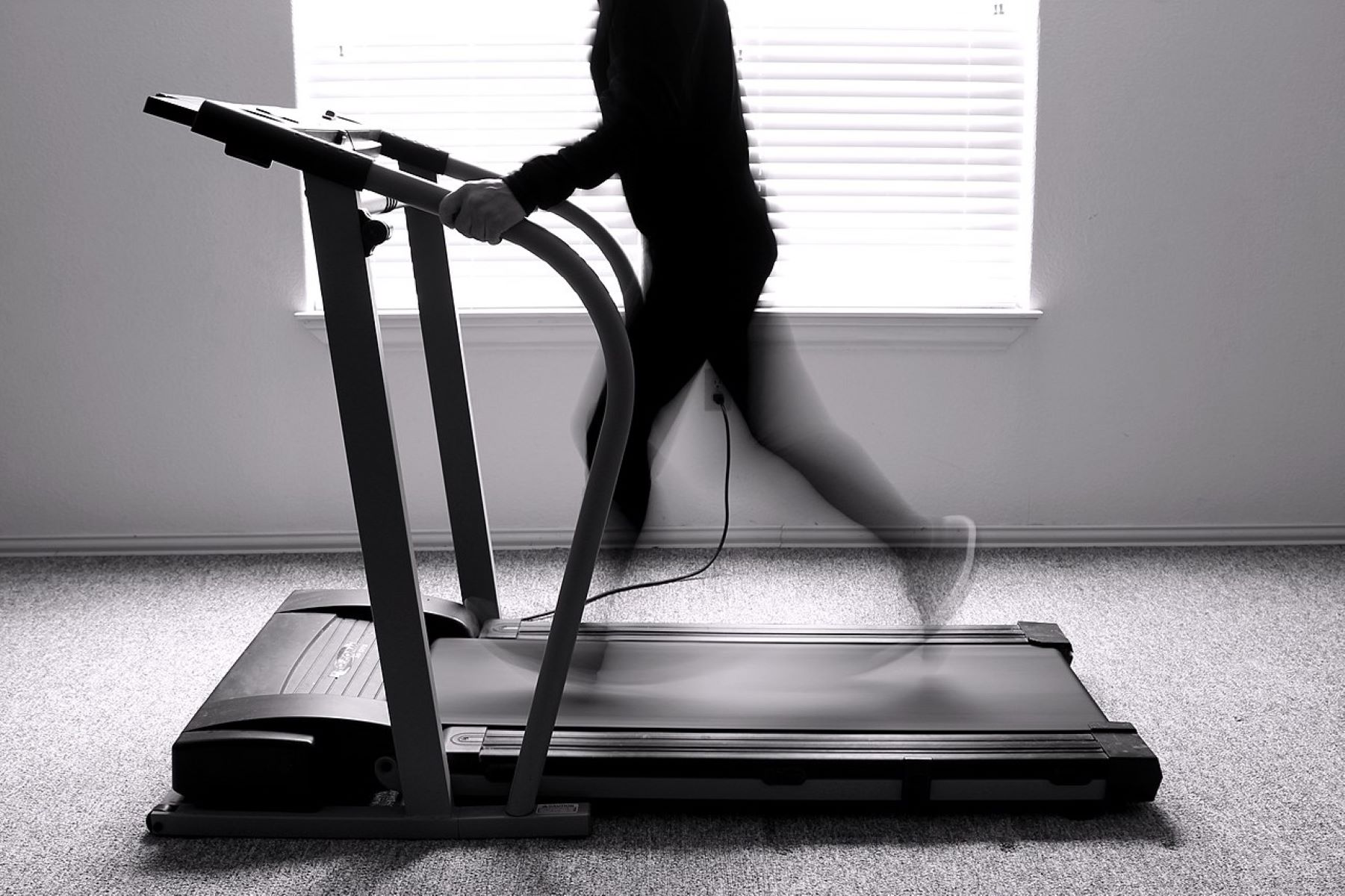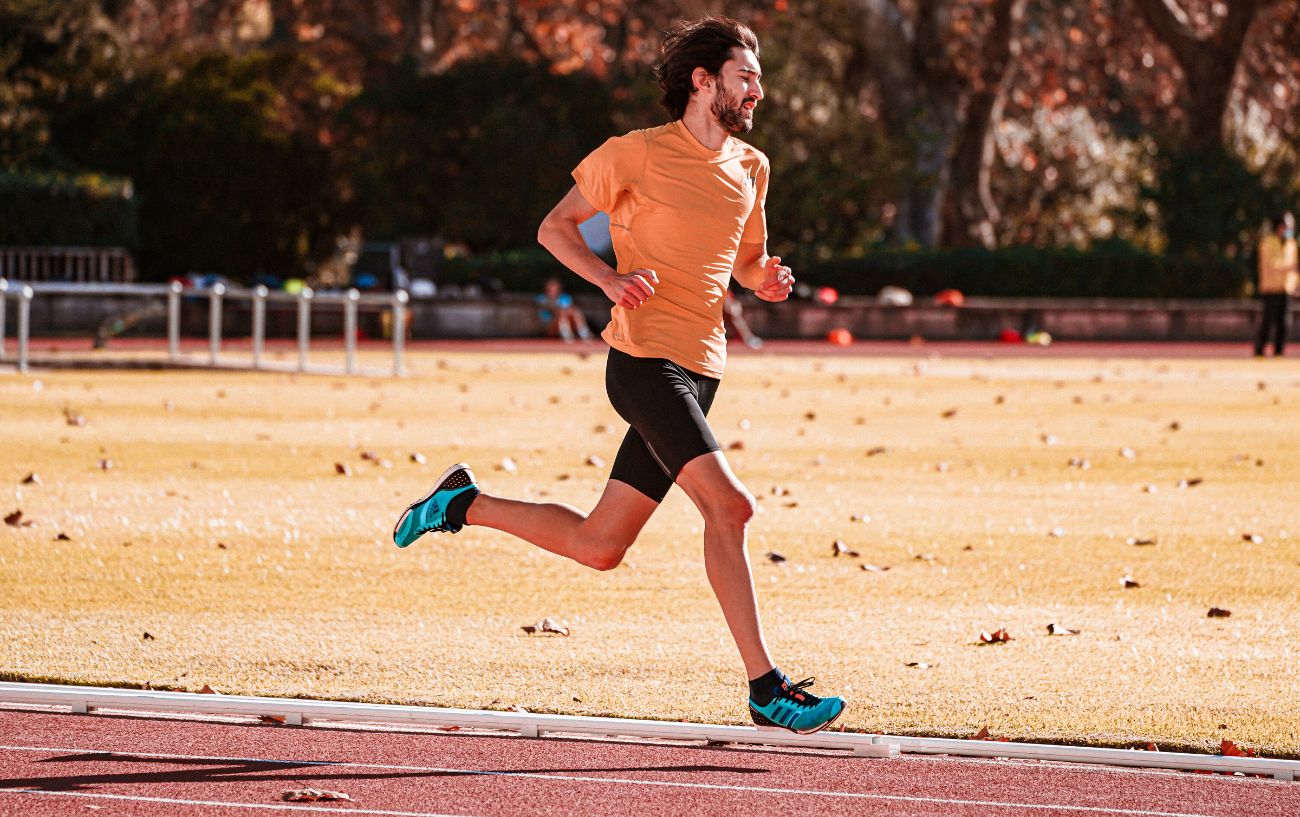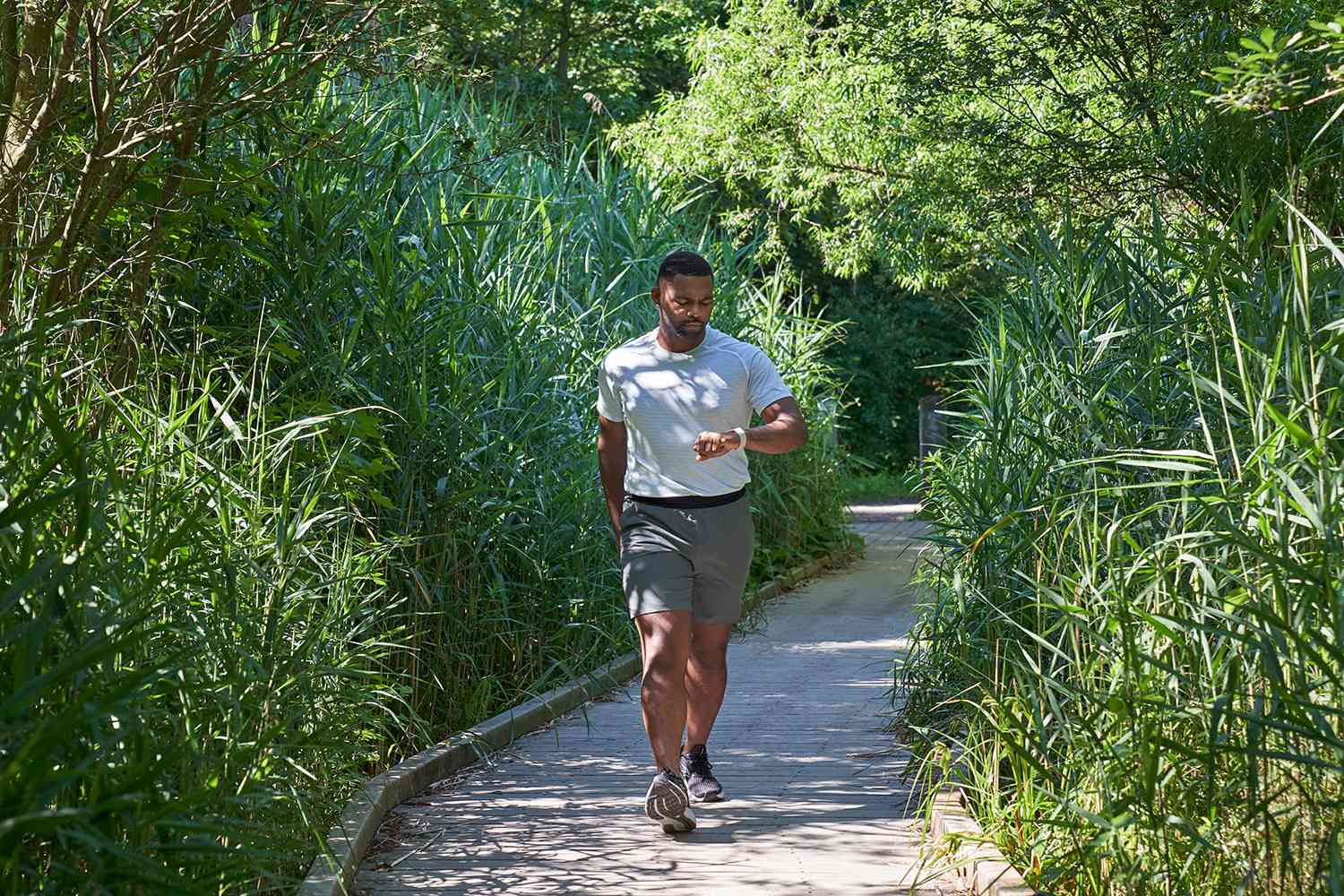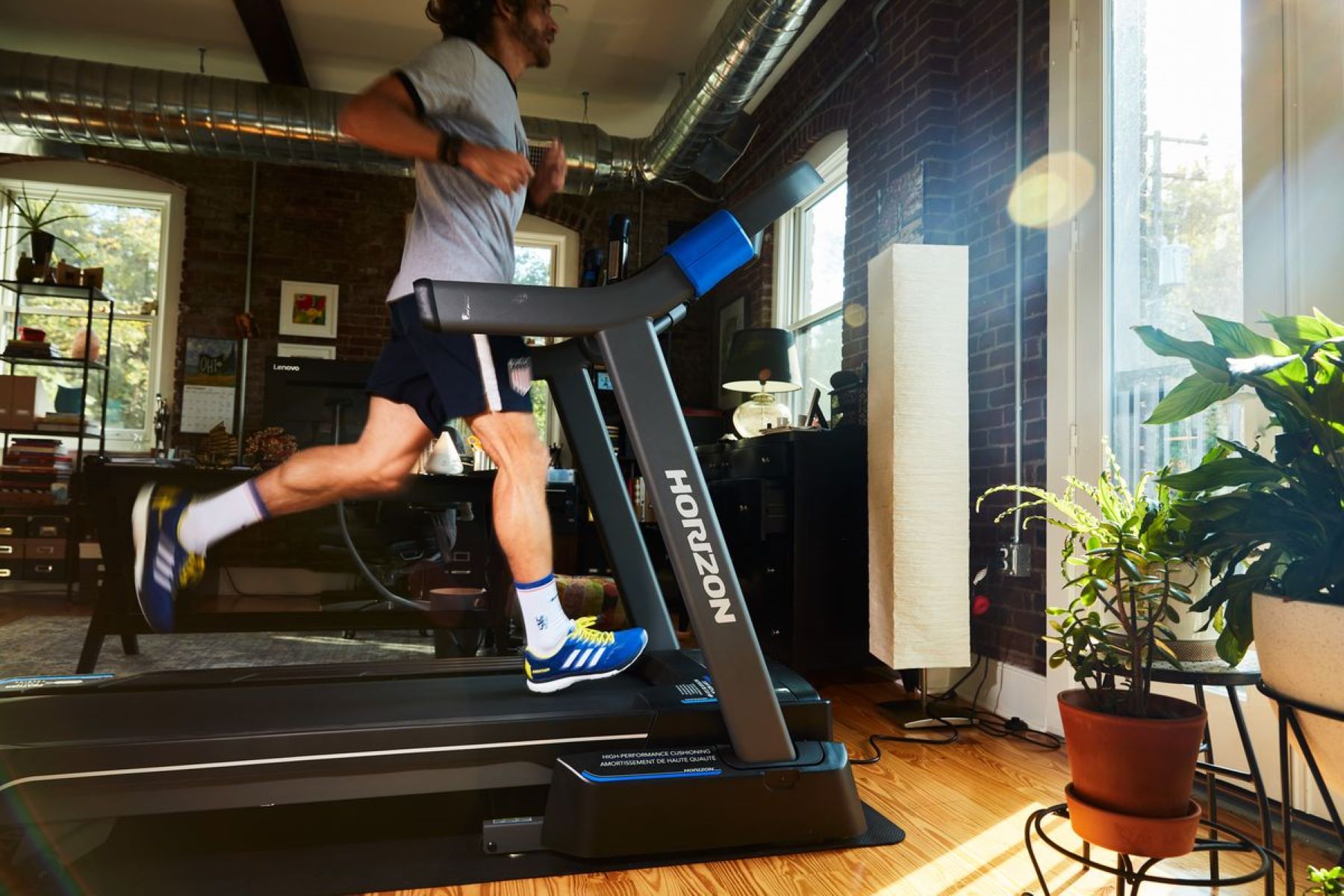

Featured
What Is Slow Jogging
Modified: January 2, 2024
Discover the benefits of featured slow jogging and improve your fitness levels with this popular low-impact exercise. Stay active and healthy with slow jogging.
Introduction
As our lives become increasingly fast-paced, it’s important to find activities that allow us to slow down and reconnect with ourselves. Slow jogging, a growing trend in the fitness world, offers a way to exercise while embracing a more relaxed and mindful approach. In this article, we will explore the concept of slow jogging, its philosophy, benefits, and how to incorporate it into your fitness routine.
Slow jogging, also known as jogging in place or easy running, is a low-intensity form of running that focuses on maintaining a comfortable pace. Unlike traditional running, which emphasizes speed and distance, slow jogging emphasizes the process and enjoyment of running. It’s about moving at a relaxed pace that allows you to listen to your body and engage in a deeper connection with your surroundings.
The philosophy behind slow jogging is rooted in the belief that running should be accessible to everyone, regardless of fitness level or age. Its advocates emphasize the importance of listening to your body and finding joy in the act of running, rather than pushing yourself to meet certain performance goals. By taking a slower approach, slow jogging allows for a more sustainable and enjoyable running experience.
The benefits of slow jogging extend beyond physical fitness. Research suggests that it can improve cardiovascular health, boost mood, reduce stress, and enhance mental clarity. The low-impact nature of slow jogging also makes it an ideal exercise for those recovering from injuries or who prefer a gentler form of exercise.
Are you interested in starting slow jogging? In the next section, we will discuss how to get started and the proper technique to follow. So lace up your shoes, find a comfortable spot, and let’s delve into the world of slow jogging.
Definition of Slow Jogging
Slow jogging, as the name suggests, is a form of jogging performed at a relaxed and comfortable pace. It is not about speed or distance, but rather about finding a rhythm that allows you to move at a pace that feels natural and sustainable. Unlike traditional running, slow jogging places a greater emphasis on the process rather than the outcome.
Unlike walking or brisk walking, slow jogging involves a slight lift of the feet from the ground, creating a fluid motion that mimics running. The key difference lies in the intensity and speed, with slow jogging being significantly slower than regular jogging or running. It is often described as a jog in place, as you can perform slow jogging on the spot or in a small designated area.
One of the defining characteristics of slow jogging is the ability to maintain a conversation effortlessly while jogging. It should not feel like a strenuous activity that leaves you breathless or exhausted. Slow jogging allows you to engage in a relaxed and comfortable breathing pattern, enabling a deeper connection with your body and surroundings.
While there is no specific speed range for slow jogging, it generally falls within the range of 3 to 5 miles per hour (5 to 8 kilometers per hour). However, it’s important to note that the actual pace will vary based on individual fitness levels and personal preferences. The key is to find a speed that allows you to maintain a comfortable jog without pushing yourself too hard.
Slow jogging is a versatile exercise that can be performed by people of all ages and fitness levels. It offers a gentle form of cardiovascular exercise that can be easily adjusted to suit individual needs. Whether you’re a beginner looking to improve your fitness or an experienced runner seeking a more relaxed approach, slow jogging can be tailored to match your goals and capabilities.
In the next section, we will explore the philosophy behind slow jogging and why it has become a popular choice among fitness enthusiasts. So, let’s dive deeper into the world of slow jogging and the principles that guide it.
The Philosophy behind Slow Jogging
At its core, slow jogging is more than just a physical exercise. It embodies a philosophy that encourages individuals to reconnect with their bodies, nature, and the present moment. The principles that guide the philosophy of slow jogging center around mindfulness, joy, and sustainability.
Mindfulness is an essential aspect of slow jogging. It encourages runners to be fully present and aware of their bodies, sensations, and surroundings during the activity. By practicing mindfulness, runners can tune into their breathing, the rhythm of their steps, and the sensations in their muscles. This focused awareness fosters a deeper connection with oneself and promotes a sense of calm and relaxation.
Another principle of slow jogging is finding joy in the act of running itself. Instead of setting performance goals or chasing personal records, slow joggers focus on enjoying the process of running. They appreciate the simple pleasure of being able to move their bodies and experience the world around them. This mindset shift enhances the overall running experience, making it a source of happiness and fulfillment.
Emphasizing sustainability is another cornerstone of the slow jogging philosophy. Slow joggers believe in cultivating a long-term relationship with running by adopting a pace that is sustainable and does not cause excessive strain on the body. By avoiding intense exertion, slow joggers reduce the risk of injuries and burnout. This allows them to maintain a consistent running routine and enjoy the benefits of running for years to come.
Slow jogging also promotes inclusivity and accessibility. It breaks down the barriers to entry that often accompany high-intensity workouts. Anyone can engage in slow jogging, regardless of their fitness level, age, or body size. This inclusive nature fosters a supportive and non-competitive environment that encourages individuals to focus on their personal progress rather than comparing themselves to others.
The philosophy of slow jogging extends beyond the individual runner. It emphasizes the importance of respecting and appreciating the environment in which we run. Slow joggers often choose scenic routes, allowing them to connect with nature and appreciate the beauty around them. This harmony with nature fosters a sense of gratitude and encourages mindful stewardship of the environment.
By embracing the philosophy behind slow jogging, runners can experience not only physical benefits but also a deeper sense of connection with themselves, others, and their surroundings. In the following section, we will explore the multitude of benefits that slow jogging offers. So, let’s continue our journey into the world of slow jogging and the positive impact it can have on our lives.
Benefits of Slow Jogging
Slow jogging offers a myriad of benefits for both the body and the mind. By incorporating this gentle and mindful form of exercise into your routine, you can experience improvements in cardiovascular health, mental well-being, and overall fitness. Let’s explore some of the key benefits of slow jogging:
- Cardiovascular Health: Slow jogging is an effective way to improve cardiovascular endurance without putting excessive stress on the body. By engaging in this low-intensity aerobic exercise, you can strengthen your heart, improve blood circulation, and lower the risk of cardiovascular diseases.
- Mental Well-being: Slow jogging provides a natural mood boost and stress relief, thanks to the release of endorphins, the body’s feel-good hormones. The rhythmic movement and mindfulness associated with slow jogging can also promote mental clarity and reduce anxiety and depression symptoms.
- Weight Management: Regular slow jogging can contribute to weight management and fat loss. While it may not burn as many calories as high-intensity workouts, slow jogging helps maintain a healthy body weight by increasing metabolism and improving overall fitness.
- Low-impact Exercise: Slow jogging puts less strain on the joints, making it an ideal exercise for those with joint issues or limitations. Unlike high-impact activities like running, slow jogging reduces the risk of injury while still providing a moderate workout for the muscles and bones.
- Improved Stamina: By consistently engaging in slow jogging, you can enhance your stamina and endurance. This will not only benefit your running abilities but also translate to better performance in other physical activities and daily tasks.
- Longevity: Slow jogging promotes a sustainable approach to exercise, enabling individuals to lead active lives well into their later years. Its low-intensity nature allows for a lifelong practice, providing numerous health benefits and improving overall quality of life.
- Community and Social Connections: Slow jogging can be a social activity, providing opportunities to connect with like-minded individuals. Joining a slow jogging group or participating in organized events can foster a sense of community, support, and motivation.
Whether you’re looking to boost your cardiovascular health, reduce stress, or simply enjoy a leisurely jog surrounded by nature, slow jogging can offer a variety of benefits to enhance your well-being. Now that we understand the advantages of slow jogging, let’s discuss how to get started and the proper technique to follow. So, let’s continue our exploration of slow jogging and prepare to embark on a fulfilling fitness journey.
How to Start Slow Jogging
If you’re new to running or have been inactive for a while, starting slow jogging can be an excellent way to introduce yourself to the world of running and build a solid foundation. Follow these steps to begin your slow jogging journey:
- Consult with your healthcare professional: Before starting any new exercise program, it’s essential to consult with your healthcare professional, especially if you have any underlying health conditions or concerns.
- Invest in proper running shoes: It’s crucial to have a pair of well-fitting running shoes that provide proper support and cushioning. Visit a specialized running store to get fitted for the right shoes based on your foot type and running style.
- Start with a warm-up: Begin each slow jogging session with a dynamic warm-up to prepare your muscles and joints for exercise. Incorporate movements such as marching in place, hip rotations, and gentle leg swings.
- Choose an appropriate location: Select a location that suits your preference, whether it’s a nearby park, trail, or a quiet residential area. Make sure the path is relatively flat and free from obstacles to minimize the risk of injury.
- Set realistic goals: Start with small, achievable goals to keep yourself motivated and avoid overwhelming your body. Begin by aiming for a short duration, such as 10-15 minutes of slow jogging, and gradually increase the time as your fitness level improves.
- Listen to your body: Pay attention to how your body feels during the slow jog. If you experience pain or discomfort, it’s essential to slow down, take a break, or modify your technique. Pushing yourself too hard can lead to injuries and setbacks.
- Practice proper breathing: Focus on your breathing pattern while slow jogging. Breathe in deeply through your nose and exhale through your mouth. Find a rhythm that feels comfortable and allows for efficient oxygen exchange.
- Stay hydrated: Always carry a water bottle with you and drink fluids before, during, and after your slow jogging session. Staying hydrated is crucial to maintaining optimum performance and preventing dehydration.
- Listen to your body: Pay attention to how your body feels during the slow jog. If you experience pain or discomfort, it’s essential to slow down, take a break, or modify your technique. Pushing yourself too hard can lead to injuries and setbacks.
Remember, slow jogging is about finding joy in the process and listening to your body’s needs. Don’t be discouraged by initial challenges, and celebrate each small milestone along the way. With consistency and patience, you’ll gradually build endurance and improve your fitness level. So put on your running shoes, step outside, and embark on your slow jogging adventure!
Proper Technique for Slow Jogging
While slow jogging is intended to be a relaxed and comfortable activity, there are still some key techniques to keep in mind to ensure proper form and minimize the risk of injury. Follow these guidelines to maintain an efficient and safe slow jogging technique:
- Begin with an upright posture: Stand tall and maintain a slight forward lean from the ankles. Avoid slouching or leaning backward, as this can strain your lower back and impede your running efficiency.
- Engage your core muscles: Activate your core muscles by gently bracing your abdominals and maintaining a stable torso. This will help improve balance and stability while running.
- Relax your upper body: Keep your shoulders relaxed and avoid tensing up your neck, shoulders, or arms. Allow your arms to swing naturally with a slight bend at the elbows, and keep your hands in a loose and relaxed fist.
- Land softly and midfoot: Aim to land softly on the midfoot or forefoot with each stride, rather than striking the ground with your heel. This promotes a more efficient running stride and reduces impact on your joints.
- Take shorter strides: Focus on shorter strides to maintain a more controlled and comfortable pace. Avoid overstriding, which can lead to increased stress on your joints and muscles.
- Maintain a comfortable and relaxed pace: Slow jogging is about finding a rhythm that feels comfortable and sustainable. Avoid the temptation to push yourself too hard and maintain a pace that allows for effortless conversation.
- Practice rhythmic breathing: Coordinate your breathing with your running rhythm. Find a breathing pattern that feels natural and allows for adequate oxygen supply. Inhale deeply through your nose and exhale through your mouth.
- Listen to your body: Pay attention to any discomfort or pain while running. If something feels off, slow down, take a break, or modify your technique. It’s important to prioritize your body’s well-being and avoid pushing through pain.
- Cool down and stretch: After each slow jogging session, take the time to cool down with a slow walk and perform gentle stretches for your leg muscles. This will help prevent muscle soreness and promote flexibility.
Remember, slow jogging is a personal journey, and it may take time to find your optimal technique and rhythm. Be patient with yourself, and don’t be afraid to experiment with slight adjustments to your form. With practice and consistency, you’ll develop a smooth and efficient slow jogging technique that suits your body and running style. Now that you have a good understanding of the proper technique, let’s move on to some tips for a successful slow jogging routine.
Tips for a Successful Slow Jogging Routine
To make the most out of your slow jogging routine and ensure a positive and fulfilling experience, consider implementing these tips:
- Start with a warm-up: Prior to your slow jogging session, perform a dynamic warm-up to prepare your muscles and joints for the activity. Include exercises like leg swings, high knees, and lunges to activate your muscles and increase blood flow.
- Gradually increase duration and intensity: As you become more comfortable with slow jogging, gradually increase the duration and intensity of your sessions. Aim to add a few minutes or slightly pick up the pace while still maintaining a comfortable and sustainable rhythm.
- Listen to your body: Pay attention to how your body feels during and after each slow jogging session. If you experience pain, excessive fatigue, or feel unwell, it’s important to take a break and give your body time to rest and recover. Pushing through pain or fatigue can lead to overuse injuries and burnout.
- Vary your routes: Explore different routes and terrains to keep your slow jogging routine interesting and engaging. Consider running in nature parks, urban trails, or even on a beach. Changing scenery can help prevent boredom and provide a refreshing experience.
- Stay consistent: Consistency is key in reaping the benefits of slow jogging. Aim for at least three to four sessions per week, gradually increasing the frequency if your body allows. Holding yourself accountable to a regular routine will help you establish a positive fitness habit.
- Listen to Music or Podcasts: Enhance your slow jogging routine by listening to upbeat and motivating music or informative podcasts. Create a playlist or download an audio program that can keep you engaged and entertained during your runs.
- Find a running buddy: Consider finding a running partner or joining a slow jogging group in your community. Exercising with others can provide motivation, accountability, and create a sense of camaraderie.
- Stay hydrated and nourished: Remember to drink plenty of water before, during, and after your slow jogging sessions to stay hydrated. Also, fuel your body with a balanced diet that includes nutritious foods to support your energy levels and muscle recovery.
- Track your progress: Use a running app or journal to track your slow jogging sessions. Monitor your distance, duration, and any improvements you notice over time. Celebrate your accomplishments and use them as motivation to keep going.
By incorporating these tips into your slow jogging routine, you can create a more enjoyable and successful experience. Remember that slow jogging is a personal journey, so feel free to experiment and find what works best for you. Now that you have some valuable tips, let’s explore some common mistakes to avoid in slow jogging.
Common Mistakes to Avoid in Slow Jogging
While slow jogging is a low-impact and relaxing form of exercise, there are some common mistakes that can hinder your progress and potentially lead to discomfort or injuries. To ensure a safe and effective slow jogging routine, be mindful of the following mistakes and try to avoid them:
- Starting too fast: One common mistake is starting slow jogging with too much intensity. Remember, the goal is to maintain a comfortable and sustainable pace. Starting too fast can lead to fatigue, burnout, and increased risk of injury. Start slow and gradually pick up the pace as your fitness level improves.
- Ignoring proper form: It’s important to maintain good running form even in slow jogging. Avoid slouching, overstriding, or tensing up your upper body. Emphasize an upright posture, relaxed shoulders, and a midfoot strike for optimal running mechanics.
- Skipping warm-up and cool-down: Neglecting a proper warm-up and cool-down can increase the risk of muscle strains and injuries. Always dedicate a few minutes to warm up your muscles before starting slow jogging and take the time to cool down with light stretches and a slow walk afterwards.
- Pushing through pain: Listening to your body is crucial in slow jogging. If you experience pain or discomfort, it’s important to stop and assess the situation. Pushing through pain can exacerbate injuries and lead to more serious issues. Take breaks, modify your technique, or seek professional help if necessary.
- Comparing yourself to others: Each individual’s slow jogging journey is unique. Avoid comparing your progress, pace, or distance to others. Focus on your own improvements, celebrate your milestones, and prioritize your own well-being and enjoyment.
- Overtraining: While consistency is important, it’s equally important to allow your body time to rest and recover. Overtraining can lead to fatigue, decreased performance, and increased risk of injury. Incorporate rest days into your routine and listen to your body’s signals for adequate recovery.
- Neglecting strength and flexibility training: Building strength and improving flexibility are important aspects of overall fitness and injury prevention. Incorporate strength training exercises and flexibility workouts into your routine to complement your slow jogging sessions.
- Not hydrating properly: Proper hydration is essential for any physical activity, including slow jogging. Dehydration can negatively impact your performance and overall well-being. Drink water before, during, and after your runs to maintain proper hydration levels.
- Fixating on metrics: While it can be tempting to focus solely on the numbers, such as distance or pace, remember that slow jogging is more about the experience and enjoyment. Instead of obsessing over metrics, focus on how you feel, the connection with your surroundings, and the benefits to your overall well-being.
Avoiding these common mistakes will help you get the most out of your slow jogging routine and ensure a safe and enjoyable experience. By staying mindful, listening to your body, and maintaining proper technique, you can reap all the benefits that slow jogging has to offer. Now, let’s explore how you can incorporate slow jogging into your overall fitness plan.
Incorporating Slow Jogging into a Fitness Plan
Slow jogging can be a valuable addition to your overall fitness plan, providing a gentle yet effective form of cardiovascular exercise. Here are some tips on how to incorporate slow jogging into your fitness routine:
- Set clear goals: Determine your fitness goals and how slow jogging fits into them. Whether you want to improve cardiovascular health, lose weight, or simply enjoy the mental and physical benefits of running, identifying your goals will help you stay motivated and focused.
- Create a schedule: Plan specific days and times for your slow jogging sessions. Consistency is key, so aim for at least three to four sessions per week. Write them down in your calendar or set reminders to ensure you prioritize and make time for your workouts.
- Mix it up: Variety is essential to prevent boredom and keep your motivation high. Incorporate other forms of exercise alongside slow jogging, such as strength training, yoga, or cycling. This helps maintain a well-rounded fitness routine and prevents overuse injuries.
- Progress gradually: As your fitness level improves, gradually increase the duration or intensity of your slow jogging sessions. This can be done by adding a few minutes to each run or slightly increasing your pace. Be patient and avoid pushing too hard, as progression should be gradual and sustainable.
- Combine with other activities: Pairing slow jogging with other activities can provide a well-rounded fitness plan. For example, you can follow up your slow jog with a stretching or yoga session to improve flexibility and aid recovery. Consider exploring different cross-training options to complement your slow jogging routine.
- Join a community: Find a local slow jogging group or connect with like-minded individuals online. Sharing your journey with others can provide support, motivation, and accountability. It also allows you to learn from experienced slow joggers and expand your knowledge and passion for the activity.
- Monitor your progress: Keep track of your slow jogging sessions, progress, and any improvements you notice. Record metrics such as distance, time, or how you feel during and after each run. This not only helps you track your progress but also serves as a source of motivation and satisfaction.
- Listen to your body: Pay attention to how your body responds to training and adjust your slow jogging routine accordingly. If you experience fatigue, persistent soreness, or feel overwhelmed, it may be a sign to rest or scale back your training. Always prioritize your body’s well-being and recovery.
- Enjoy the journey: Remember that slow jogging is not just about achieving specific goals but also about enjoying the process. Embrace the journey, appreciate the benefits it brings to your overall well-being, and find joy in each slow jog.
By incorporating slow jogging into your fitness plan, you can improve your cardiovascular health, enhance mental well-being, and enjoy the many physical benefits that running has to offer. Customize your routine to align with your goals, listen to your body, and stay consistent. Now that you have the tools to incorporate slow jogging into your fitness plan, it’s time to get out there and enjoy the experience!
Conclusion
Slow jogging offers a unique and mindful approach to running, allowing individuals to connect with their bodies, nature, and the present moment. Throughout this article, we have explored the definition of slow jogging, its philosophy, benefits, and how to incorporate it into your fitness routine. Slow jogging emphasizes mindfulness, joy, and sustainability, making it accessible to individuals of all ages and fitness levels.
By embracing slow jogging, you can improve cardiovascular health, boost mental well-being, manage weight, and enhance overall fitness. It provides a low-impact exercise option that is gentle on the joints, making it suitable for those recovering from injuries or seeking a more relaxed form of exercise.
To start slow jogging, focus on proper technique, tempo, and listening to your body’s cues. Incorporate warm-up and cool-down exercises, stay consistent, and gradually increase duration and intensity. Avoid common mistakes such as starting too fast, pushing through pain, and neglecting proper form.
Remember to set clear goals, create a schedule, and mix up your fitness routine with other activities. Joining a slow jogging community can provide valuable support and motivation throughout your journey. Monitor your progress and listen to your body, making adjustments as needed.
Incorporating slow jogging into your fitness plan is a fantastic way to improve your overall well-being. Enjoy the journey, appreciate the process, and find joy in each slow jog. So, lace up your shoes, step outside, and start your slow jogging adventure today. Experience the physical and mental benefits while reconnecting with yourself and the world around you.









